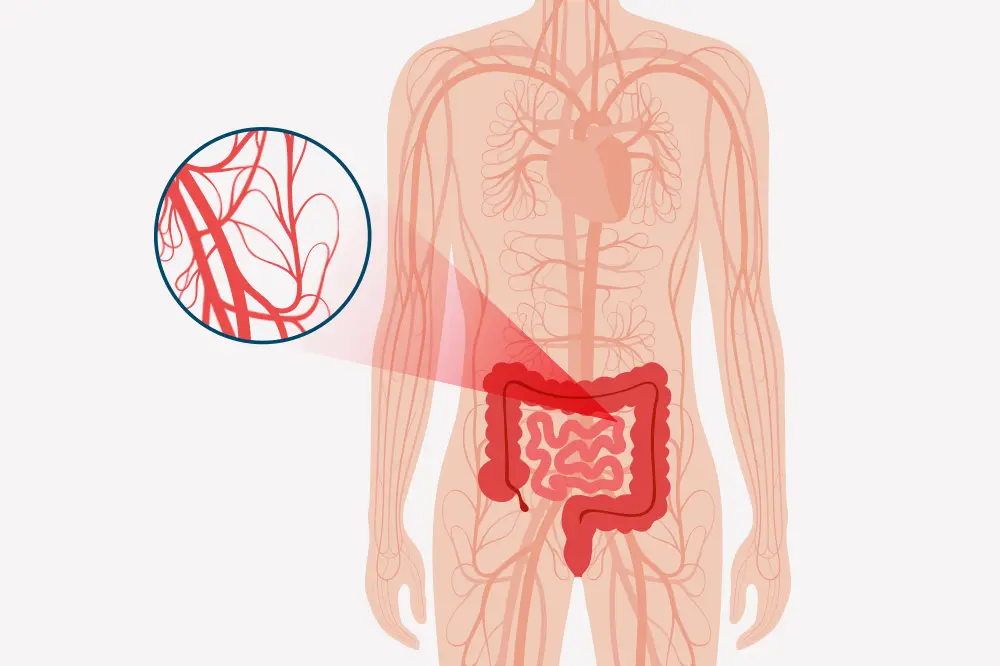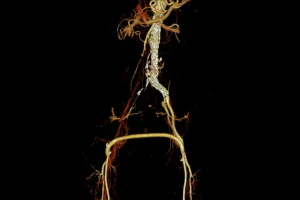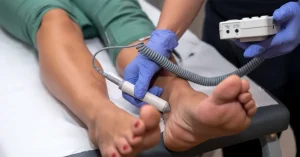In interventional medicine, mesenteric artery angiography and angioplasty are procedures used to diagnose and treat vascular problems of the intestine. These interventions are performed by physicians specialized in interventional radiology and are recommended for patients with mesenteric vascular diseases.
What Is Mesenteric Artery Angiography?
Mesenteric artery angiography is an imaging procedure that involves injecting a contrast dye into the superior or inferior mesenteric artery to visualize the blood vessels. It is useful in detecting blockages and determining the degree of arterial stenosis.
How Is Mesenteric Artery Angiography Performed?
The procedure is minimally invasive and performed under local anesthesia. The doctor inserts a catheter through the femoral artery and guides it to the mesenteric artery. Once in place, contrast dye is injected, and an X-ray device is used to visualize the vessels.
How Mesenteric Artery Angiography and Angioplasty Help Patients With Mesenteric Vascular Diseases
Mesenteric artery angiography plays a crucial role in detecting blockages in the mesenteric arteries and determining the degree of arterial stenosis. Based on this information, the physician can decide whether mesenteric artery angioplasty is necessary to restore blood flow to the intestine. Mesenteric artery angioplasty can be particularly beneficial for patients suffering from intestinal ischemia, a condition that can lead to bowel necrosis if left untreated.
Hemostasis
After the procedure is completed, the catheters and arterial sheaths are removed, and compression is applied to the puncture site of the accessed artery. To achieve proper compression, a compressive dressing is placed and must be kept for 24 hours to prevent bleeding.
At VenArt Clinic, a specialized closure device (SafeGuard) is routinely used to control pressure and achieve hemostasis after the procedure. This device offers the advantage of adjustable active pressure and provides increased comfort for patients.
The patient will be advised to remain on bed rest. In some situations, the use of a hemostatic system at the femoral puncture site is indicated. This is applied in the angiography room immediately after the intervention. AngioSeal is a small collagen plug inserted into the femoral artery, achieving hemostasis in just two hours. This allows the patient to move their leg freely and get out of bed much sooner.
General Risks Associated With Angiography and Angioplasty
- Allergic reactions to administered substances
- Reactions to anesthetics
- Minor bleeding at the puncture site
- Arteriovenous fistulas
- Fever
- Headache, migraine
- Infection
- Air embolism
- Arterial wall injury
- Aortic rupture or dissection
- In-stent restenosis
- Stent migration
- Hematoma at the puncture site
What Happens After the Procedure?
- Drink at least 2 liters of water to flush out the contrast agent
- Control electrocardiogram
- Remove the dressing after 12–24 hours
- Blood tests
What Should You Do After Leaving the Hospital?
After angioplasty, it is important to attend follow-up appointments with your cardiologist and follow the prescribed treatment. You can resume daily activities immediately, maintaining moderate physical activity, a balanced diet, and regular monitoring through blood tests. For more information or if you would like a consultation, please do not hesitate to contact us.











